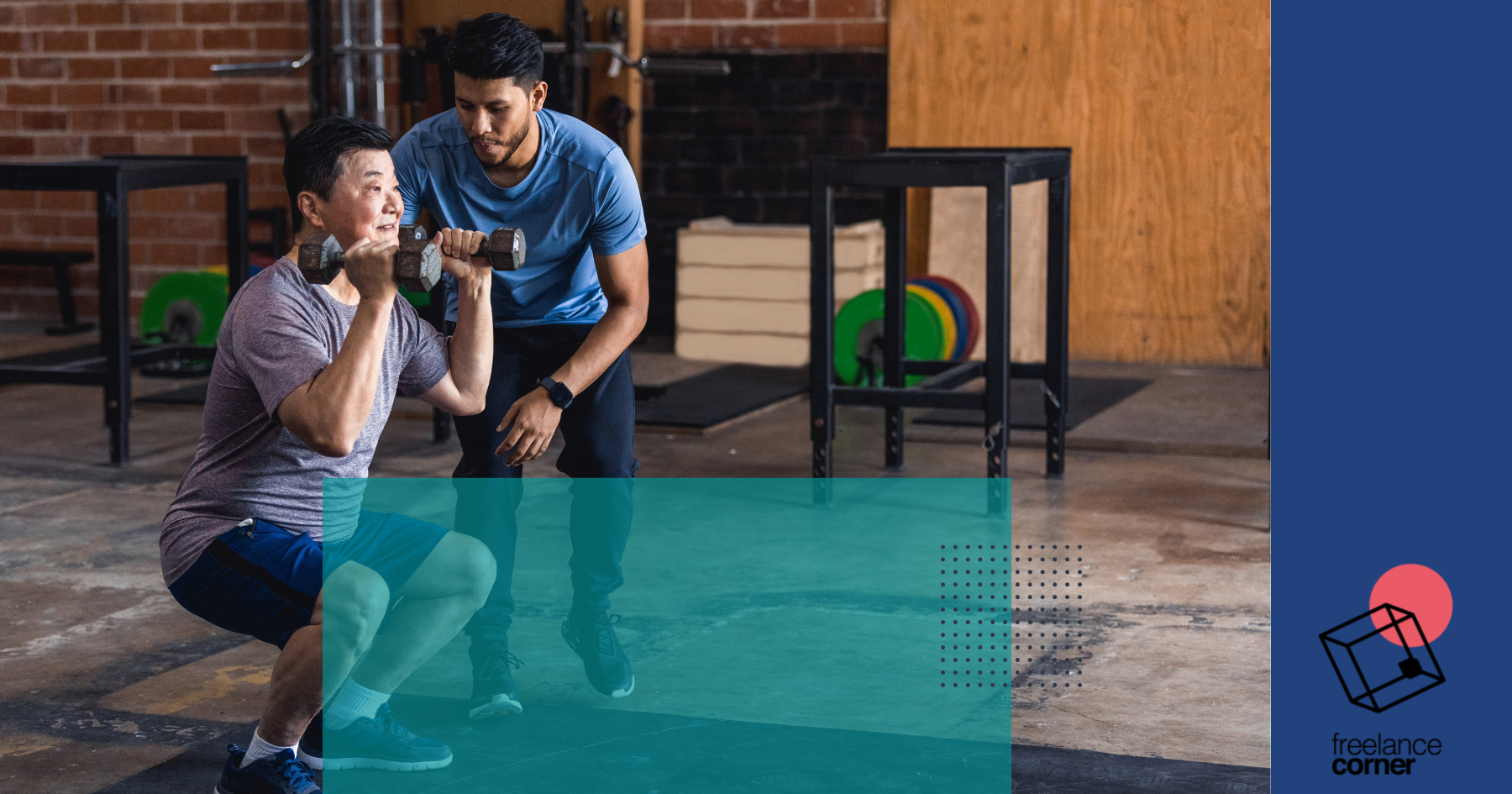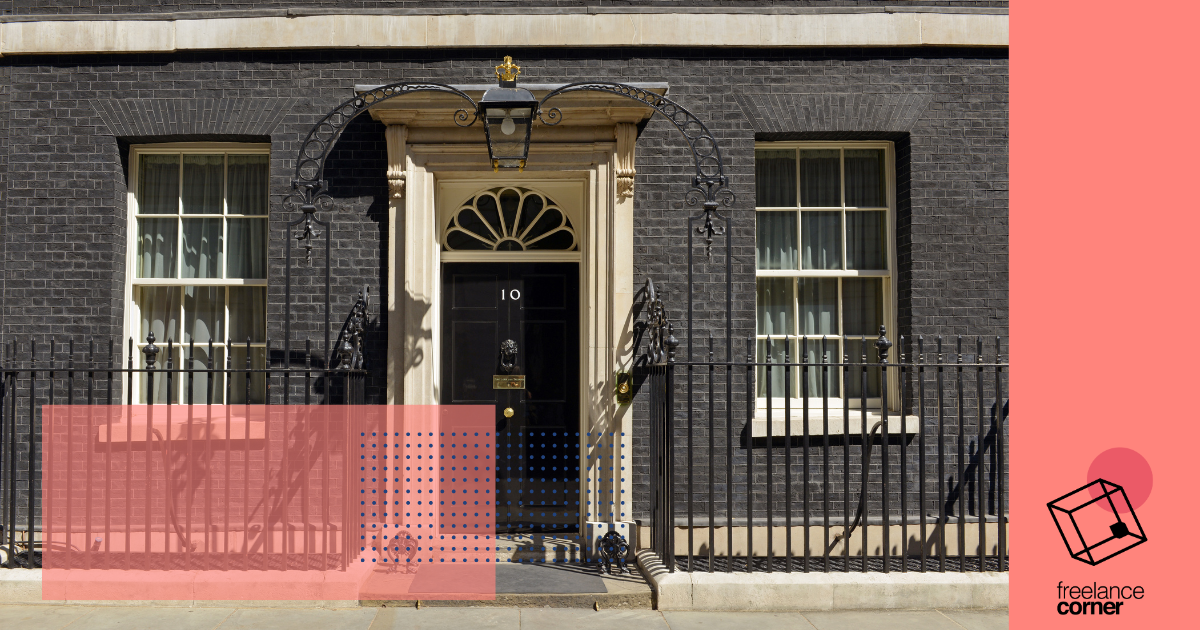You don’t have to be a world class athlete to become a freelance personal trainer. A knowledge of fitness, and the ability to motivate clients can build a successful career, although it certainly helps to enjoy exercise!
If you do have experience of sport and competition, it can be a useful way to attract potential customers. But the growth of body positivity and diversity means that having toned abs or bulging biceps isn’t the necessity it once was.
And you’re free to conduct classes at local gyms and sports centres, from home, or even outdoors, if it suits your training regime.
- Why become a freelance personal trainer?
- What skills do you need to be a successful personal trainer?
- Are qualifications required to freelance as a personal trainer?
- How much can you earn as a freelance personal trainer?
- Equipment and other requirements for personal trainers
- How to find clients when you’re starting your business
- More support and resources to become a freelance personal trainer
Why become a freelance personal trainer?
The majority of people who choose to become a freelance personal trainer will have existing experience of fitness and sport. In some cases, it’s a logical next step after a professional sporting career has ended. And for others, the benefits of self-employment are more attractive than working for a gym or health centre.
But every freelancer is different, and there are a range of benefits to working for yourself. It gives you the freedom to take your own approach to fitness and training, or to specialise in particular areas of the industry. And to incorporate other areas, such as body confidence, motivational speaking, becoming a health blogger or an ambassador for relevant brands and companies.
You’re also able to build a closer relationship with your clients, which means you can tailor routines and schedules around their individual needs – and yours! You might choose to offer training sessions around other commitments, or only work certain months of the year if you prefer to hold classes outside.
Being a freelance personal trainer also means you’re not closely tied to a specific location. So, if you want to offer classes in the UK during the Summer, and then relocate somewhere else for the Winter months, there’s nothing to stop you.
What skills do you need to be a successful personal trainer?
Anyone working closely with individual clients will need good interpersonal skills, including communication, motivation and patience. You’re going to be training people with different abilities and temperaments, and you need to remain supportive and professional with every single one of them.
And that includes if they’re blaming you for not losing weight quickly enough, or failing to beat their fitness objectives or goals. Your client won’t always be right, but you have to be respectful even if you’re explaining why they might be wrong.
You’ll also need to ensure that being friendly and supportive for clients doesn’t mean that professional boundaries become compromised.
It’s important for you to be organised, and have good time management skills, to ensure training schedules and routines are productive. Clients will soon lose interest if you’re constantly late to classes, or forgetting to bring equipment.
Demonstrating your own personal health and fitness will make it much easier to attract clients. If you’re out of breath after five minutes, your clients aren’t going to be confident that you can make them fitter.
Understanding injuries and health issues is extremely useful to ensure you’re not putting clients at risk, or making an existing condition worse. Along with knowing what to do in an emergency situation.
And for a complete fitness service, you may also want to learn good nutrition and health practices, including suggesting recipes, sleep routines, or other practices which can help boost the effectiveness of your training.
Are qualifications required to freelance as a personal trainer?
The health and fitness industry can be confusing as some careers require qualifications or professional registration, while others are open to anyone. Occupations including personal trainer or nutritionist aren’t restricted, while dieticians or professional sports coaches require degrees or training from relevant sporting authorities.
But while that means in theory that you can become a freelance personal trainer without any qualifications, the reality is different as it’s illegal to operate without relevant insurance. And most (if not all) policies will require at least a Level 3 Diploma in Personal Training, which is broadly equivalent to an A-Level. And a Level 2 Certificate in Gym Instructing is also a common requirement, and widely recommended.
These courses are relatively short and offered by a variety of providers. It’s important to check any training and certification is offered by a reputable and accredited body, and is recognised within the industry, so organisations including UK Coaching, and The Chartered Institute for the Management of Sport and Physical Activity (CIMSPA) are good resources to find appropriate courses.
Besides being an insurance requirement, qualifications will also prove your expertise to clients and employers, and ensure you have relevant knowledge and experience to train people safely. And it can be a requirement to become a registered member of CIMSPA, or the National Register of Personal Trainers (NRPT)
In addition, a relevant first aid qualification, including a cardio-pulmonary resuscitation certificate (CPR) isn’t a legal requirement, but is recommended.
You can also take your studies further either with specialist training in areas of sport and fitness, or by taking a higher education qualification in relevant areas.

How much can you earn as a freelance personal trainer?
When you become self-employed, your earning potential can vary a lot depending on demand, location, and your personal skills and experience. So, any estimates are given as a broad overview of what’s possible if you become a freelance personal trainer.
The average income for a freelancer personal trainer is £25,538 (Glassdoor). This is fairly similar to the figures given for all personal trainers at £27,897 (Indeed), £31,461 (Talent), or £33,118 (Check-a-Salary), with the lowest incomes around £14-15,000, and higher salaries around £50,000. But obviously, it’s possible to go beyond this when you’re self-employed by attracting high-paying clients, expanding to employ other fitness instructors, or supplementing your income in other ways.
As a freelancer, you could also become a health and fitness influencer or blogger, work with relevant companies and brands to promote their products, or create books and guides. Probably the most famous example in the UK is Joe Wicks, who has built a multi-million-pound fitness business.
Equipment and other requirements for personal trainers
The most important investment for any freelance personal trainer won’t be weights or treadmills. It’s the public liability and professional indemnity insurance which cover claims resulting from accidents or negligence. Public Liability applies to personal injuries and property damage, for example, if a client falls and smashes into a wall in their home. And Professional Indemnity refers to alleged negligence or mistakes, if a client believes your training has made their situation worse, for example.
You can find a detailed guide to Professional Indemnity insurance on the IPSE website, along with discounts on all types of business cover for IPSE members.
The actual fitness equipment you might need to invest in will vary depending on your approach to training, but some of the basics might include:
- Weight scales
- Skin fold callipers
- Aneroid Sphygmomanometer and Stethoscope (to check blood pressure)
- First aid kit
- Exercise mats
- Medicine balls
- Resistance bands
- Skipping ropes
- Stability balls
- Battle ropes
- Foam rollers
- Boxing gloves and pads
- Kettlebells
- Kit bags
In addition to the equipment, you’ll also need to invest in client logbooks and forms to collect personal details, track progress, and set out training routines. And you’ll also need to understand how GDPR regulations apply to any personal data you’re collecting, whether you’re teaching clients in-person or online.

How to find clients when you’re starting your business
If you’re starting out as a personal trainer, there are a wide range of ways you can choose to market your business and get the first clients signed up. But to be successful, it’s important to decide which approaches suit your personality and skills.
Family, friends and former colleagues are a good starting point for any new freelancer. You’re bound to know at least a few people who want to get fitter and healthier, even if you may need to offer a free or discounted offer to convince them to give you a try.
If you really want to focus on personal service and satisfaction, then providing easy ways for them to recommend you to others is a great idea. That can include referral schemes and discount codes, which can be set up through online services, or handled manually when you’re just beginning your new career.
Websites and social media offer a huge opportunity, but don’t try to cover everything at first. Pick the channels which showcase your strengths. Blogs, Youtube and Instagram are the most recommended options, but they won’t work if you hate writing, appearing in videos, or having your picture taken. And you need to give them enough time and effort for a potential audience to start growing.
Getting to know other freelancers can be hugely helpful, including those outside the health and fitness industry. A network of other trainers and fitness instructors can lead directly to work if they need support with their business or want to refer excess clients across. But if you struggle with writing articles, filming videos or getting the right Instagram aesthetic, you might be able to exchange services with other freelancers rather than paying for their time. And find some different sources of marketing inspiration.
Think about the ways you can stand out from other trainers, whether that’s highlighting a past sporting career, qualifications and experience, or specialisation in particular areas. And make sure to list these on your website, social media profiles, and any professional directories or listings.
You can find a range of articles on winning work in the IPSE Advice section, including finding clients and more.
More support and resources to become a freelance personal trainer
- UK Coaching
- The Chartered Institute for the Management of Sport and Physical Activity
- National Register of Personal Trainers
- IPSE
Researching other freelance careers? Why not check out our other guides:
- How to become a freelance SEO consultant
- How to become a freelance web designer
- How to become a freelance writer
- How to become a freelance Virtual Assistant (VA)
- How to become a freelance photographer
- How to become a freelance business analyst
- How to become a freelance event planner or organiser
- How to become a freelance structural engineer
- How to become a freelance coach
- How to become a freelance proofreader
- How to become a freelance bookkeeper
- How to become a freelance content creator
- How to become a freelance illustrator
- How to become a freelance photojournalist
- How to become a freelance hair stylist
- How to become a freelance recruiter
- How to become a freelance translator
- How to become a freelance editor
- How to become a freelance music producer
- How to become a freelance WordPress developer
- How to become an author
- How to become a freelance tutor
- How to become a freelance makeup artist
- How to become a freelance animator
- How to become a freelance photo editor
- How to become a freelance model
- How to become a freelance digital marketer
- How to become a freelance network engineer
- How to become a freelance chef
- How to become a freelance fundraiser
- How to become a freelance data scientist
- How to become a freelance graphic designer
- How to become a freelance accountant or financial consultant
- How to become a freelance interior designer
- How to become a freelance HR consultant
- How to become a freelance filmmaker
- How to become a freelance transcriptionist
- How to become a freelance game developer
- How to become a freelance first aid trainer
- How to become a freelance video editor
- How to become a freelance project manager
- How to become a freelance musician
- How to become a freelance massage therapist
- How to become a freelance social media manager
- How to become a freelance 3D artist or modeller
- How to become a freelance AI prompt engineer
- How to become a freelance dog groomer
- How to become a freelance location scout
And you can get support and help if you’re starting out with self-employment, or still in the early stages of building your career, with the IPSE Incubator. The 12-month programme is currently free with IPSE membership, and includes advice, events, webinars, networking and more, tailored to anyone just beginning their freelance business.






